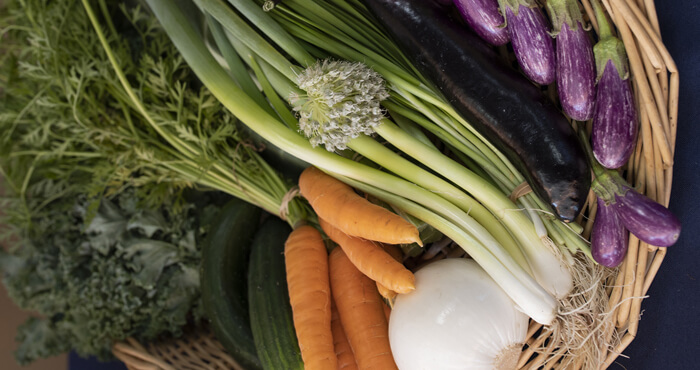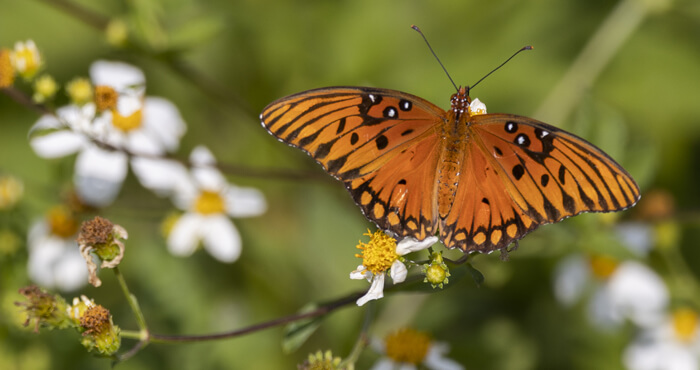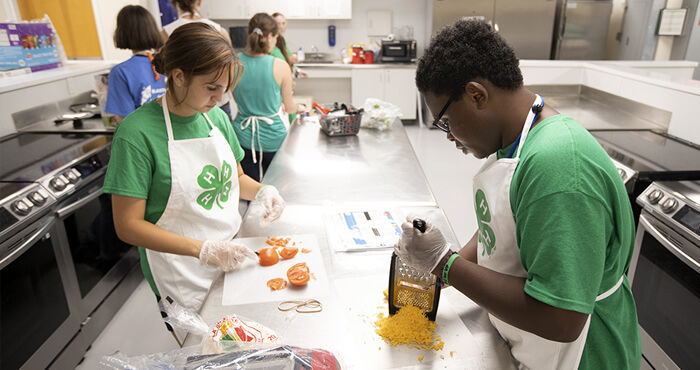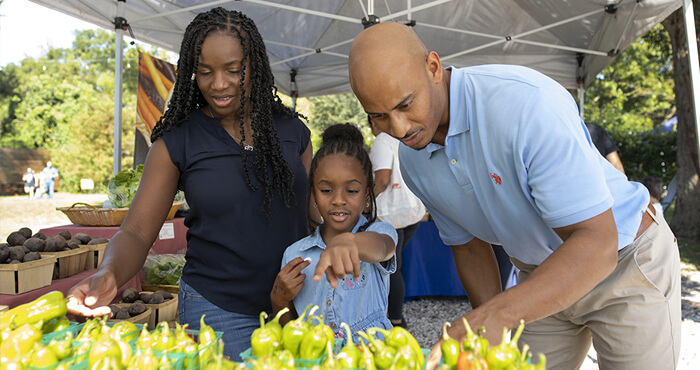
Pollination
At some point in our lives, we all learn where little ones come from. But where do fruits and vegetables come from? If you're thinking about starting a fruit or vegetable garden, it helps to understand a little about the biology behind these tasty crops – and the process of pollination specifically.
It Starts With a Flower
The first step in fruit or vegetable production is when the plant produces flowers, which come in three basic varieties. Male flowers have male reproductive parts and produce pollen. Female flowers have ovaries that--once fertilized--become the fruit or vegetable.
The third type is what biologists call a "perfect" or "complete" flower, which has both male and female parts within a single flower. Most garden vegetables such as beans, peppers, and tomatoes have complete flowers.
In all cases, the male pollen must reach the female eggs in order for fruit to be produced. This transfer of pollen is called pollination and can happen in several different ways.
Methods of Pollinating
Different plants rely on different techniques for pollination. Some plants--like corn--let the wind carry pollen to the female flowers, while other plants--like squash--depend on the help of outside pollinators such as insects to deliver the pollen to the female flowers. Birds and bats are also pollinators.
The most widely recognized pollinator is the honey bee. As a bee climbs inside a male flower, pollen sticks to hairs on the bee's body. Later, the bee will crawl into a female flower and the pollen will brush off onto a wand-shaped structure called the pistil. The pistil houses the ovaries that--now fertilized--will mature into the fruit.
Plants that produce perfect flowers may be able to self-pollinate, though some still benefit from contact with pollinators. For example, although tomato plants produce complete flowers, these flowers require a bit of movement to release the pollen from the male parts onto the female parts. Bees searching for pollen in tomato flowers cause the flowers to vibrate, shaking the pollen loose and creating "buzz pollination."
Flowers But No Fruit
Sometimes plants produce flowers but no fruit. This scenario typically signals a pollination problem and is fairly common with plants in the squash family: cucumbers, squashes, and melons. Since these plants produce separate male and female flowers, they require bees or other insects to transfer the sticky pollen from the male to the female flower.
In many areas, honey bee populations have been declining due to such problems as colony collapse disorder, and therefore have been less effective as pollinators of fruit and vegetable crops.
You can help plants in the squash family by hand pollinating the flowers. Take a small paintbrush and transfer the yellow pollen from the male flower to the pistil inside the female flower. To be sure you have a female flower, look for a swollen structure at the base of the flower that looks like a mini-squash. Be sure to use freshly opened flowers and transfer the pollen during the morning hours. Within a few days, you should know whether you were successful.
Protect the Pollinators
If you use pesticides in your yard, you may be protecting your plants from pests but also hurting beneficial insects like honey bees. Here are some tips to keep in mind:
- First and foremost, use pesticides only when necessary.
- Apply pesticides in the evening, since bees typically are active during the morning and afternoon hours.
- Avoid spraying plants during bloom or when they are flowering.
- If the pesticide is available in both liquid and powder form, opt for the liquid. The powder is likely to stick to the hairs on the bee's body and possibly be transported back to the hive.
To find out more about how to reduce pesticide exposure to pollinators, read the publication, "Minimizing Honey Bee Exposure to Pesticides." You can also check out "Gardening for Bees" and "Gardening for Birds" for more information on how to create gardens that will attract pollinators.
Resources
Other UF/IFAS Sites
- Gardening Solutions
- Entomology and Nematology Department
- Environmental Horticulture Department
- FAWN: Florida Automated Weather Network
- Florida-Friendly Landscaping™ Program
- Florida Master Gardener Program
- IPM Florida
- Pesticide Information Office
UF/IFAS Publications
State & Federal Agencies
- Florida Department of Agriculture and Consumer Services (FDACS)
- Florida Department of Environmental Protection (FDEP)
- Florida Energy Systems Consortium (FESC)
- U.S. Environmental Protection Agency (EPA)
- USDA Plant Hardiness Zone Map--U.S. National Arboretum
Organizations & Associations
- American Community Gardening Association
- American Horticultural Society
- Florida Native Plant Society
- Florida Nursery, Growers and Landscape Association (FNGLA)
- North American Native Plant Society
Other Sites & Publications
UF/IFAS Mobile Web Apps





.jpg)

.jpg)
